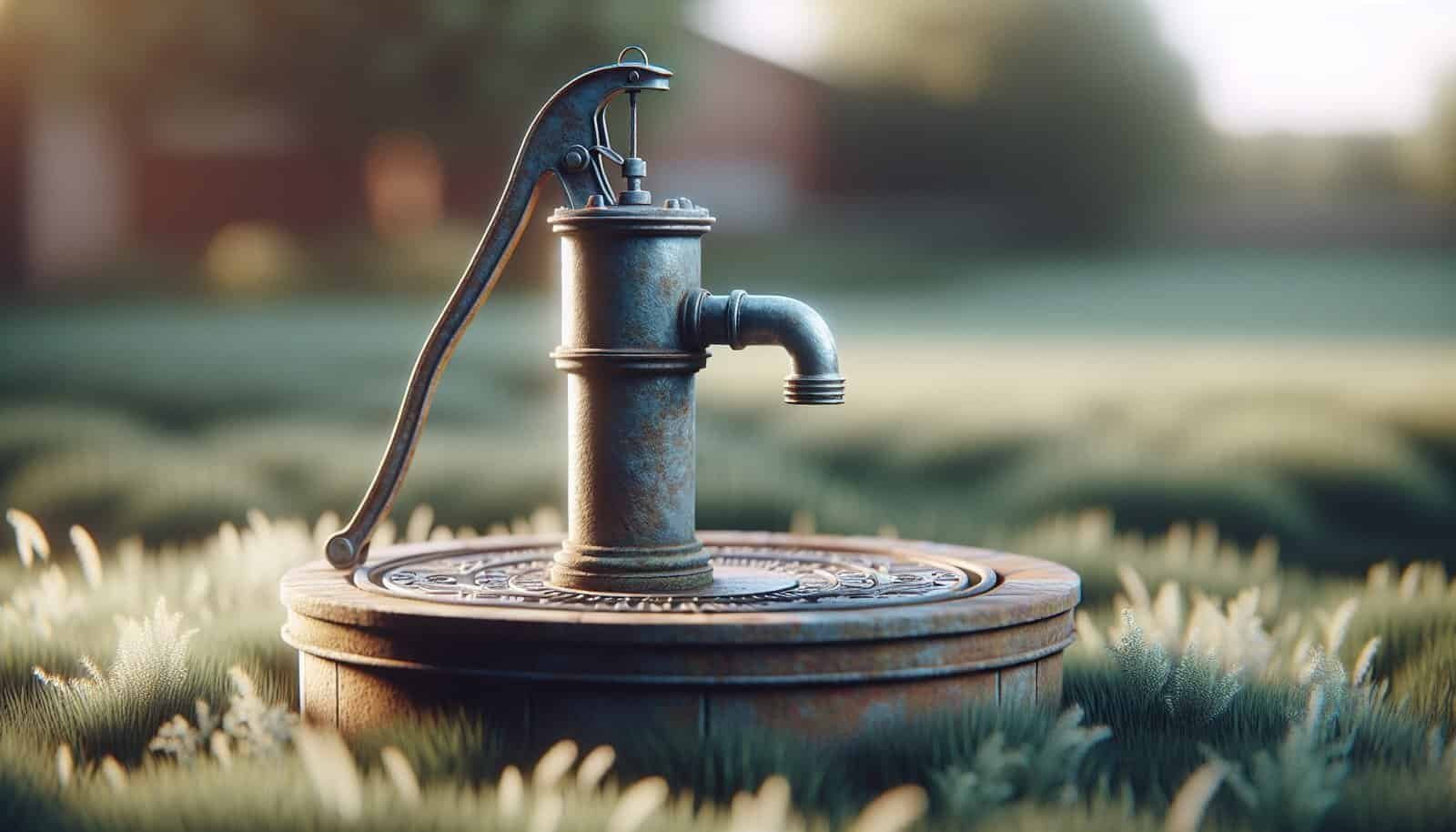? Can you share a water well with your neighbors?
Can I Share A Water Well With My Neighbors?
You can share a water well with your neighbors, but whether you should and how you do it depends on legal, technical, financial, and interpersonal factors. Sharing a well can save money and simplify access to groundwater, but it also introduces responsibilities and potential disputes you’ll want to manage carefully.
What Is a Shared Well and How Does It Work?
A shared well is a single groundwater source that supplies water to two or more properties. You’ll typically have a single well bore, pump, and distribution system that branches to multiple homes via dedicated piping, meters, or a shared line. Sharing can take the form of informal arrangements or formalized systems that include easements and written agreements.

Types of Shared Water Arrangements
Understanding the common ways people share wells helps you pick an approach that fits your situation.
- Shared private well: Two or more neighboring homes use one well, often with a simple cost-sharing arrangement and an easement.
- Community or cluster well: Several properties form an association to operate and maintain a well that supplies multiple homes, often with formal governance.
- Subdivision or HOA well: A homeowners association owns and maintains a well for a whole development, with costs included in dues.
Legal Considerations You Need to Know
Legal issues are central when you share a well, because water access and land rights are regulated and vary by location. You’ll want to protect yourself and your neighbors with clear legal documents.
Water Rights and Ownership
Water rights depend on state law—some states apply riparian principles, others use prior appropriation, and many have specific statutes for groundwater. You’ll need to determine whether the well is accessory to a parcel of land or considered a shared resource. Make sure you understand whether each participating property has a legal right to the water and how those rights are documented.
Easements and Access Agreements
If the well sits on one parcel but benefits multiple parcels, you should record an easement granting access and use rights. An easement outlines who can access the well location, who can use the water, and whether additional infrastructure may be installed. You should record easements in the county land records so future purchasers are bound by the agreement.
Permits and Local Regulations
Many jurisdictions require permits for new wells, shared wells, or changes to a water system. You’ll also need to comply with building codes, health department rules, and possibly subdivision regulations. Contact your county or state environmental health/water resources office to learn specific requirements.
Liability and Insurance
Sharing a well creates potential liability for contamination, injuries, or failure. You’ll want to consider liability insurance, and the shared well agreement should specify insurance requirements. If the well is on your land, it’s particularly important to know how liability will be allocated.
Resale, Title, and Transfer Issues
When you sell your property, the well agreement and easement affect the sale. Buyers and lenders typically review recorded documents. Make sure the shared well arrangement is transferrable to new owners and that obligations don’t create hidden liabilities.

Technical and Hydrological Considerations
A well’s ability to serve multiple homes hinges on geology, well design, and equipment. You’ll want to evaluate feasibility with technical professionals.
Well Capacity and Safe Yield
You should confirm the aquifer and well yield can supply peak demand from multiple homes without excessive drawdown. Safe yield is the sustainable rate at which water can be withdrawn. A hydrogeologist or well driller can perform pump tests and calculate safe yield.
Well Type, Depth, and Construction
Deeper wells or those properly cased and sealed provide more reliable supply and reduce contamination risks. You’ll want to know the well’s construction details—casing diameter, depth, pump depth, and whether there is a separate distribution pressure tank.
Pump and Distribution System
Shared systems may require larger pumps, pressure tanks, and properly sized distribution lines. You’ll want to consider whether a single pump will operate for the whole system or if separate pumps and meters are better. Redundancy (backup pumps or power) can reduce service interruptions.
Water Quality and Treatment
Multiple homes increase the range of uses (drinking, irrigation) and expectations for water quality. You’ll need regular testing for bacteria, nitrates, lead, and other contaminants. Decide whether point-of-entry treatment (one centralized treatment system) or point-of-use devices (filters at each home) will be used.
Cross-Connection and Backflow Prevention
If the shared system connects to other water sources or irrigation systems, you must prevent contamination via backflow. Install backflow prevention devices and follow local requirements.
Financial and Cost-Sharing Considerations
You’ll need a clear plan for funding initial costs, ongoing maintenance, repairs, electricity, replacement, and eventual upgrades. A transparent financial structure prevents disputes.
Initial Costs
Initial expenses often include drilling, materials, pump installation, pressure tanks, distribution piping, meters, permits, and legal fees to establish the shared arrangement. You should get multiple bids and a cost estimate from qualified contractors.
Ongoing Operating Costs
You’ll share electricity to run the pump, routine testing and treatment, repairs, and possibly operator fees if you hire a professional. Consider establishing a dedicated bank account or HOA-style fund for operating expenses and reserves.
Cost-Sharing Methods
You can split costs evenly, by usage (metered), by household size, or by property frontage. Each method has pros and cons:
| Cost-sharing method | How it works | Pros | Cons |
|---|---|---|---|
| Equal split | Divide costs equally among users | Simple, predictable | May be unfair for differing usage |
| Metered usage | Install meters and bill by volume | Fair, usage-based | Requires meters, reads, billing |
| Property share | Allocate by lot size or frontage | Reflects land benefit | May not reflect actual water use |
| Household size | Allocate by number of occupants | Reflects likely use | Can be gamed; occupants change |
| Hybrid | Combine base fee + usage charge | Balances fairness and predictability | More complex administration |
Choose a method that’s practical for billing and fair to participants.
Reserve Fund and Replacement Planning
Plan a reserve fund for pump replacement, motor failure, or casing issues. Pumps typically last 10–20 years depending on use and water quality. Establish funding triggers (e.g., when reserve drops below a threshold) and contribution schedules.

How to Create a Solid Well-Sharing Agreement
A written agreement is essential. Words alone won’t be enough when disputes arise; recordable legal documents will protect everyone.
Essential Elements of a Shared Well Agreement
Your agreement should include these components:
- Parties and legal descriptions of properties covered
- Statement of purpose and allowed uses
- Easement and access rights, including location maps
- Cost-sharing method for initial and ongoing expenses
- Metering, billing, and payment procedures
- Operation and maintenance responsibilities
- Testing, treatment, and inspection schedules
- Insurance and liability allocations
- Emergency procedures and repair protocols
- Dispute resolution (mediation, arbitration, court)
- Transfer and sale procedures and obligations to new owners
- Termination or buyout terms and procedures
- Recordation clause and amendment procedures
Sample Agreement Clauses (Short Examples)
Below are short, friendly examples you can adapt with a lawyer:
- Use and Access: “Owners of Lots A, B, and C shall have the nonexclusive right to withdraw groundwater from the shared well located on Lot A, as depicted on Exhibit A.”
- Costs: “Initial construction costs shall be divided equally among the three lot owners. Ongoing electricity and maintenance costs shall be allocated monthly by meter readings.”
- Maintenance: “Routine maintenance shall be scheduled annually. Emergency repairs up to $1,000 may be authorized by any owner; repairs over $1,000 require majority approval.”
- Transfer: “Upon sale of a lot, the seller must provide a copy of this agreement to the buyer. The buyer shall assume the obligations and rights of the seller.”
Always have legal counsel review the drafted agreement and record it with local authorities.
Practical Steps to Establish a Shared Well
Follow a clear sequence to reduce risk and confusion.
- Discuss intentions and expectations with neighbors in person. Clarify wants and constraints.
- Hire a licensed well driller or hydrogeologist to assess feasibility, yield, and siting.
- Obtain necessary permits and approvals from local health/environmental authorities.
- Decide cost-sharing and operational structure and get written estimates from contractors.
- Draft a formal shared well agreement with a real estate attorney and record easements.
- Install meters, treatment, or backflow devices if required.
- Create a bank account, reserve fund, and agreed billing cycle.
- Establish an operations and emergency contact list, including contractor info.

Meters, Monitoring, and Billing
Installing meters makes billing transparent and encourages conservation. You can use mechanical or smart meters that report remotely. Decide how often you’ll bill (monthly, bimonthly, quarterly) and what penalties for late payments will be. Keep records for audits and potential future disputes.
Maintenance, Testing, and Water Safety
You’ll want a routine program to safeguard water quality and system integrity.
Routine Maintenance Tasks
- Inspect well head and cap annually for damage or vandalism.
- Check pressure tank and pump performance periodically.
- Service pressure switches and electrical connections.
- Remove vegetation and ensure proper drainage away from the wellhead.
Water Testing Schedule
Follow health department recommendations for testing. Typical minimums:
- Bacteria (coliform/E. coli): at least annually, and after repairs or contamination events.
- Nitrates: annually, especially if near agricultural sources or septic systems.
- Lead, arsenic, VOCs: based on local risk factors or once to establish baseline.
- Additional tests when taste, odor, or staining are observed.
Treatment Options
Treatment can be centralized at the wellhead (whole-house treatment) or decentralized in each home (point-of-use filters). Common treatments include chlorination for bacteria, ion exchange for nitrates, activated carbon for organics, and water softening for hardness.
Emergency Response
Your agreement should list emergency contacts for repairs, disinfection, and municipal health agencies. You should agree on immediate steps if contamination is suspected, including notification procedures and alternate water supplies.

Managing Conflict and Dispute Resolution
Conflicts are common in shared systems. Pre-agree on how you’ll resolve disputes to avoid escalation.
Communication Protocols
Maintain regular meetings or a digital forum for updates. Share records of bills, tests, and repairs promptly. Transparency reduces suspicion.
Formal Dispute Resolution
Include mediation as a first step in the agreement, followed by arbitration or court as necessary. Decide whether disputes will be governed by local state law and which jurisdiction will apply.
Remedies and Enforcement
Define remedies for nonpayment, such as liens on property or cut-off procedures, while complying with local laws. Avoid taking physically unilateral actions like shutting off access without legal authority.
When a Shared Well Becomes Problematic
Certain issues may force changes to your arrangement:
- Overuse causing declining water levels or wells drying up
- Chronic contamination issues
- Frequent expensive repairs or poor maintenance
- One party’s behavior causing environmental or legal exposure
If problems persist, the agreement should provide mechanisms to modify ownership, adjust cost-share, or terminate the arrangement.
Alternatives to Sharing a Well
If sharing isn’t feasible or desirable, you can consider alternatives:
- Individual wells for each lot
- Connecting to a public water system, if available
- Installing rainwater harvesting or cisterns for non-potable uses
- Forming a small water company or HOA-owned system with professional operation
Each alternative has its tradeoffs in cost, reliability, and regulatory compliance.
Pros and Cons of Sharing a Well
Weigh these before deciding.
| Pros | Cons |
|---|---|
| Lower per-household cost than drilling separate wells | Shared responsibility can lead to disputes |
| Fewer wells reduce environmental footprint | Reduced control over system operation |
| Easier access to higher-quality or deeper wells | Liability and legal complexity |
| Potential for centralized treatment and monitoring | Potential supply issues if demand exceeds capacity |
Example Cost Calculations
Here are simple examples to help you estimate shared costs. Adjust numbers for your local conditions.
Example 1 — Equal split for 3 households:
- Drilling and installation: $12,000 total → $4,000 each
- Annual maintenance and electricity: $1,200 → $400 each
- Reserve fund contribution (per year): $600 → $200 each
Example 2 — Metered usage for 3 households:
- Install meters: $900 total → $300 each
- Monthly volume charge billed from meter readings:
- Household A: 2,000 gal → $12
- Household B: 3,000 gal → $18
- Household C: 1,500 gal → $9
- Base service fee for admin: $15/month split equally → $5 each
These examples show how different billing methods affect monthly payments and fairness.
Frequently Asked Questions (FAQ)
Provide concise answers to common concerns so you can make informed decisions.
Q: Do you need a new permit to add neighbors to an existing well? A: It depends on local rules. Some jurisdictions require new permits or notification when a well becomes a shared source. Contact your health or water authority.
Q: Can you put an easement on a shared well? A: Yes. An easement is commonly used to grant access and use rights to neighboring lots and should be recorded in land records.
Q: What happens if someone doesn’t pay their share? A: Remedies depend on your agreement and state law. Options include mediation, charging interest, placing a lien, or invoking a cut-off procedure if legally allowed.
Q: How often should you test the well water? A: At minimum, annually for bacteria and nitrates. Test more often after repairs, contamination events, or if someone in the household is ill or pregnant.
Q: Who owns the water in a shared well? A: Ownership of the physical well is typically tied to the land where it’s located. Water rights are governed by state law and your written agreement. You should clarify ownership and usage rights in a recorded document.
Q: Can a lender finance a property with a shared well? A: Lenders will review the recorded agreement and may require that obligations are clear and enforceable. Some lenders view shared wells as a risk and will scrutinize documents more closely.
Checklist: Setting Up a Shared Well
Use this checklist to guide the process and avoid missing critical steps.
- Talk with neighbors to agree on goals and expectations.
- Obtain a hydrogeological assessment and pump test.
- Collect written estimates for drilling, equipment, and distribution.
- Check local permitting and health department requirements.
- Hire a real estate attorney to draft shared well agreement and easements.
- Record agreements and easements with the county.
- Install meters and backflow prevention devices if required.
- Establish a bank account and reserve fund for the system.
- Set a testing schedule and designate responsible parties for maintenance.
- Define dispute resolution and emergency response procedures.
When to Consult Professionals
You should consult professionals at key stages:
- Hydrogeologist or licensed well driller: feasibility, location, yield, and testing.
- Water treatment specialist: designing appropriate treatment systems.
- Real estate attorney: drafting enforceable agreements and easements.
- Accountant or financial advisor: structuring cost-sharing and reserves.
- Insurance agent: reviewing liability and coverage needs.
Final Thoughts and Next Steps
Sharing a well can work well for you if you take steps to protect the resource and relationships. Make decisions based on technical assessments, clear legal documents, and transparent financial arrangements. By planning ahead and documenting responsibilities, you’ll reduce the chance of disputes and ensure reliable water service for all parties.
If you’re considering a shared well, start by having an open conversation with your neighbors and then get a hydrogeological assessment and legal counsel to draft a formal agreement. Those steps will give you the information and protections you need to move forward confidently.
